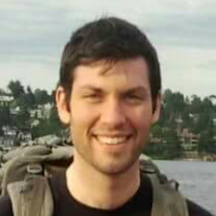By Chris Clark for Enlivening Edge Magazine
The team was in crisis. “I don’t know what to do,” said the CEO. “One of our self-organizing teams has made a huge mistake — one that could jeopardize our company’s relationships with regulators and government officials. Not only did they miss a critical compliance issue, they weren’t even aware they had missed it. What do I do?”
I asked what they sensed their options were.
“I don’t know — do I swoop in and take over? Go back to telling people exactly what to do? Or just keep myself out of it and hope they figure it out?”
Sooner or later, a situation like this arises in every organization aspiring to self-organization, evolutionary purpose, and wholeness—the breakthroughs of Teal-stage organizing. A team will make a critical mistake. Some key skill, some important awareness will suddenly show up as “missing” from a team that once depended on management.
What do Teal leaders do when this sort of gap, like a crack in the earth, suddenly widens beneath their feet? They’ve made a commitment to a way of operating in which the imposition of will is anathema; stepping in feels as if it goes against the reasons their organization went to self-management in the first place. So they hesitate, and for good reason. Shifting back to hierarchy in moments of crisis ultimately weakens the team:
It prevents teams from learning from their mistakes.
It teaches teams that they are not accountable for their success.
It limits the potential for new skills to develop, including very “Teal-ish” senses like curiosity, systems-awareness, and inquiry.
Whenever a leader makes it clear they’re waiting in the wings to take over when things get tough, the whole organization becomes less capable and resilient: stuck in a limbo of inconsistency and mistrust, or worse, resignation.
And yet, failures and mistakes sometimes rear their heads at massively critical junctures requiring swift and decisive resolution, with assurance that the same mistake won’t happen again.
So what does a “leader” do? This kind of conundrum can appear like a zero-sum game. “Either I step in with authority and direct a change, or I remain hands-off—and end up wringing my hands at the risk, hoping the team can right its own ship in time.” Neither solution feels “safe enough to try,” in Teal-ish parlance.
But, that this situation feels like a binary choice reveals an essential truth about leadership, a truth hiding in plain sight:
Leadership is not authority.
We forever confuse the two. This is because we believe people in authority are placed in those positions because of their ability to lead. Most often, nothing could be further from the truth.
In Teal organizations, leadership doesn’t disappear; on the contrary, as authority becomes distributed, powerful leadership takes on preeminence. Rather than being the purview of an elite class of managers, supervisors, and executives, leadership becomes the responsibility and possibility of every member of the organization. In fact, contrary to popular belief:
Teal-consciousness organizing requires that more leadership is present in the system, rather than less.
But notice I didn’t say “more leaders.” Why? Because leadership is a verb, not a job.
Leadership is the activity of mobilizing people to take on a challenge they would otherwise avoid.
Using this definition, anyone can exercise leadership—including former CEO’s and Founders. In fact, exercising leadership might be the single most difficult choice facing those previously occupying authority positions in organizations newly operating at the Teal stage.
Why is this? Consider what is required of people in authority positions in traditional organizations:
They set direction.
They keep things stable.
They ensure that the organization stays safe.
They maximize predictability.
If people in authority positions fail to do these things, what happens? Someone else from the organizational system will rise to take their place, promising to fulfill the safety and predictability mandate better than their predecessor. And the message from the system is, yes you will—or else.
Now consider what people practicing leadership do and how that is viewed from a “leader perspective”:
They bring up issues previously off-limits to discussion, engaging in healthy conflict (too dangerous).
They bring in new ideas that run contrary to the norm (too unstable).
They see opportunities for expanding on Evolutionary Purpose that feel risky (too unpredictable).
They resist telling people what to do to ensure learning, ownership, and accountability (too little direction).
With this in mind, something becomes apparent about traditional organizations that seems completely counter-intuitive to our understanding about leadership in the West: the higher one goes in terms of positional authority, the harder it is to exercise leadership. The system will resist. It will push back, demanding safety and predictability, and it will make those who exercise leadership towards the ambiguous, transformational, and potentially painful pay for their transgressions.
This is why more than ever, the regular exercise of leadership throughout the entire system becomes necessary in Teal organizations.
Unfortunately, not many of us are taught the skills of exercising leadership, including those who attend business schools and earn their MBA’s. We learn instead how to respond to hierarchy. This is why it’s so important that a Teal organization fosters conversations about leadership—leadership as a verb, as a possibility latent within each member of the team. We’ve been habituated into those qualities so highly prized by traditional organizations—too often we stay in our lanes; we don’t question, and we aren’t curious.
Thus, when teams fail, when critical mistakes are made, the choice isn’t between remaining hands-off versus assuming control. The choice is to step into the stance of leadership: bringing gaps to a team’s awareness and holding the stance that this is important and we must respond, opening up a new space previously inaccessible to the team: a space that assumes responsibility and competence. Even better, start opening those spaces before crisis hits. Wherever possible, cultivate curiosity. Raise and expand awareness. Leadership is dynamic motion; it summons and evokes, weaves and concentrates.
How?
Initiate a courageous, authentic conversation where no subject is off limits.
Bring people together to tell their stories across boundaries.
Ask the questions that feel obvious, risky, or unimportant.
These and other opportunities to exercise leadership are available for anyone who senses the gap, the opportunity, the risk—even former CEO’s and Founders.
For more reading on adaptive leadership, see the classic Leadership without Easy Answers by Ronald Heifetz.

Chris Clark partnered with Frederic Laloux and others to create the Reinventing Organizations Wiki, and Discourse sites. He lives in the shadow of the mountains near Seattle, Washington, helping guide organizations near and far transitioning to Teal structures and practices.





Chris, what do you see as necessary, in terms of personal qualities, besides skills to exercise leadership?
What is your recommendation for the “leader’s” response to massively critical junctures requiring swift and decisive resolution, if the person or team accountable for such resolution lacks the requisite competence?
Well George, maybe this is a weakness of the article, because what I’m hoping to point to is that we believe we arrive at a situation like your hypothetical more often than we actually do. We misread the situation because of our filters–I want to loosen up those filters.
I’m reminded of when I was handing off my responsibilities as team lead to another manager in a large tech company, and as I was talking about the people on my team to my successor (a former army guy), he said, “you know what you did wrong? You gave the grunts too much time to think.” Since most of our old legacy command/control systems are predicated on the belief that the “grunts” aren’t smart enough to solve complex issues, I would bet that even among Teal-aspiring people, there is a tendency for this prejudice to go on living subtly. Actually as I sit here, I can think of a few examples from experience!
So if I was posed your question by someone living that situation, the first thing I would ask is, “how do you know they don’t have the requisite competence?”
It also seems to me like there is a hidden possibility in your use of the word “accountable.” In my mind, if something is beyond my competence to address, I can hardly be held accountable for it. If a team encounters a situation they aren’t capable of handling on their own, then it seems to me that it becomes the natural accountability of those who can respond. The opportunity might then be for the team to learn whatever they need to learn in order for their capacity to grow. And if someone tells me, “I can get us out of this mess, are you willing to do what I say?” I don’t think this counts as resuming command-and-control–if I’m in a real pickle, I’m more than happy to accept their help! There’s actually great “Tealishness” in a person or team allowing themselves to be directed, temporarily, for a purpose, with their full consent. Something like this exists by default in Holacracy, in that one role can request that another exercises one set of accountabilities over another, for the sake of moving things along.
The biggest problem I see is that unfortunately, when the authority reflex reasserts itself, it tends to do so “whole hog.” The role of a mentor or a coach is to provide support with the level of touch that maximizes learning, at the right amount of danger. Like with a gymnast trying a very difficult air maneuver: the coach’s role is to give just enough support, and no more, at exactly the right time, and for no longer, as is necessary for the gymnast to learn without falling on their head. Unfortunately managers are trained in the Orange paradigm to build scaffolds and ladders so nobody ever actually ends up flying.
In any event, if accountability needs to be assumed, I think that’s quite different from authority. And I would default to trust anyone who was in a Teal-organized role to recognize this. “Hey, I see something you don’t that’s massively critical. I can take on that accountability now, then let’s see afterwards what needs to be done to make sure we’re better prepared for this gap again.” I think most people would say Yes to that, AND it’s not just the “Leader” who bears the responsibility to make that intervention.
Hmmm… Another way I believe we misread is by seeing more situations as “massively critical” than they actually are. Especially if one gets a nice boost from being the one person with the fire extinguisher. Then everything is a fire! And the only person competent to respond is the one holding the fire extinguisher. An act of leadership would be, “Hey Sally, I see you’re the only one with the fire extinguisher. After we put this fire out, let’s talk about what it would take for more of us to have access to one.” 🙂
Great, Chris, thx!
good stuff, Chris!